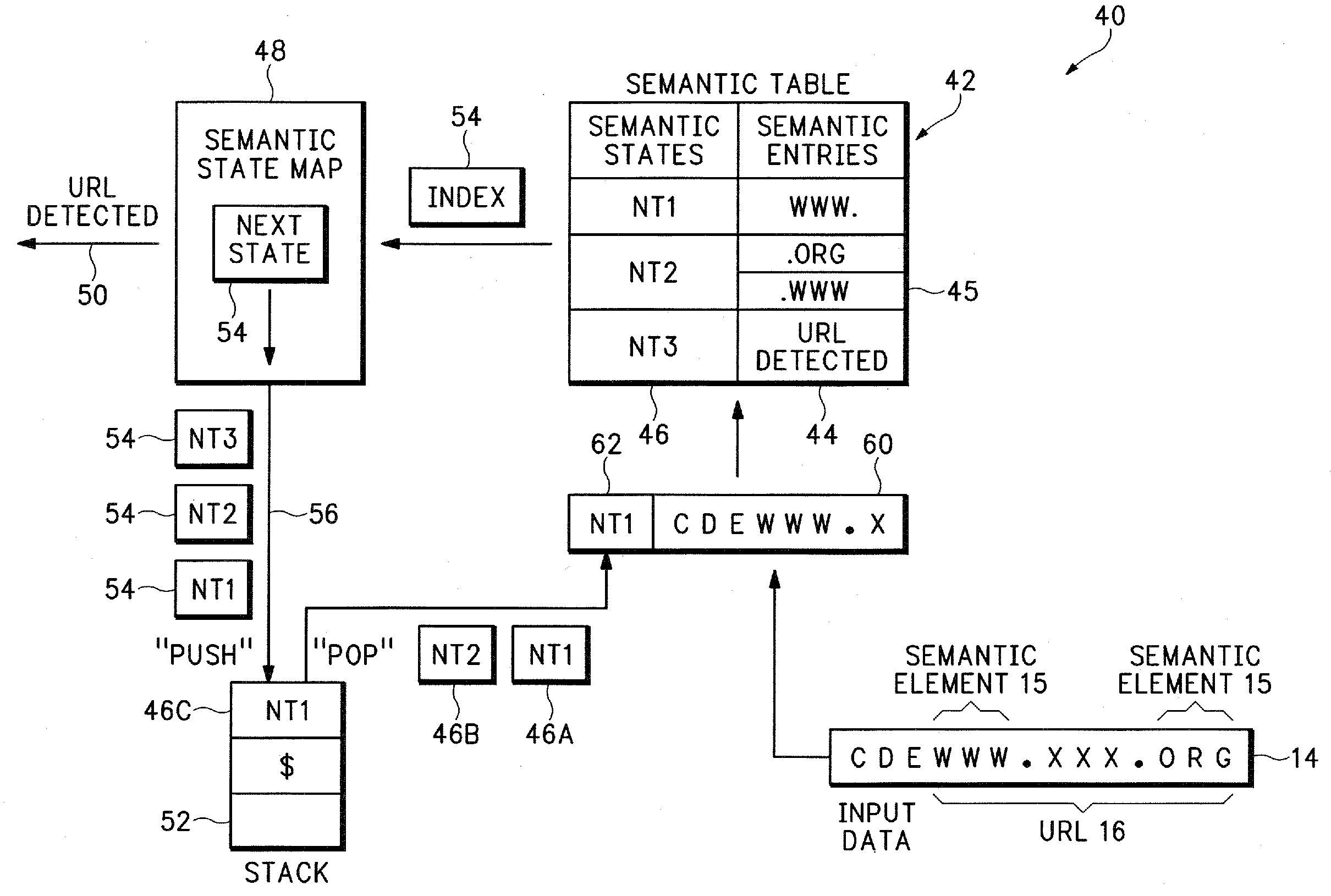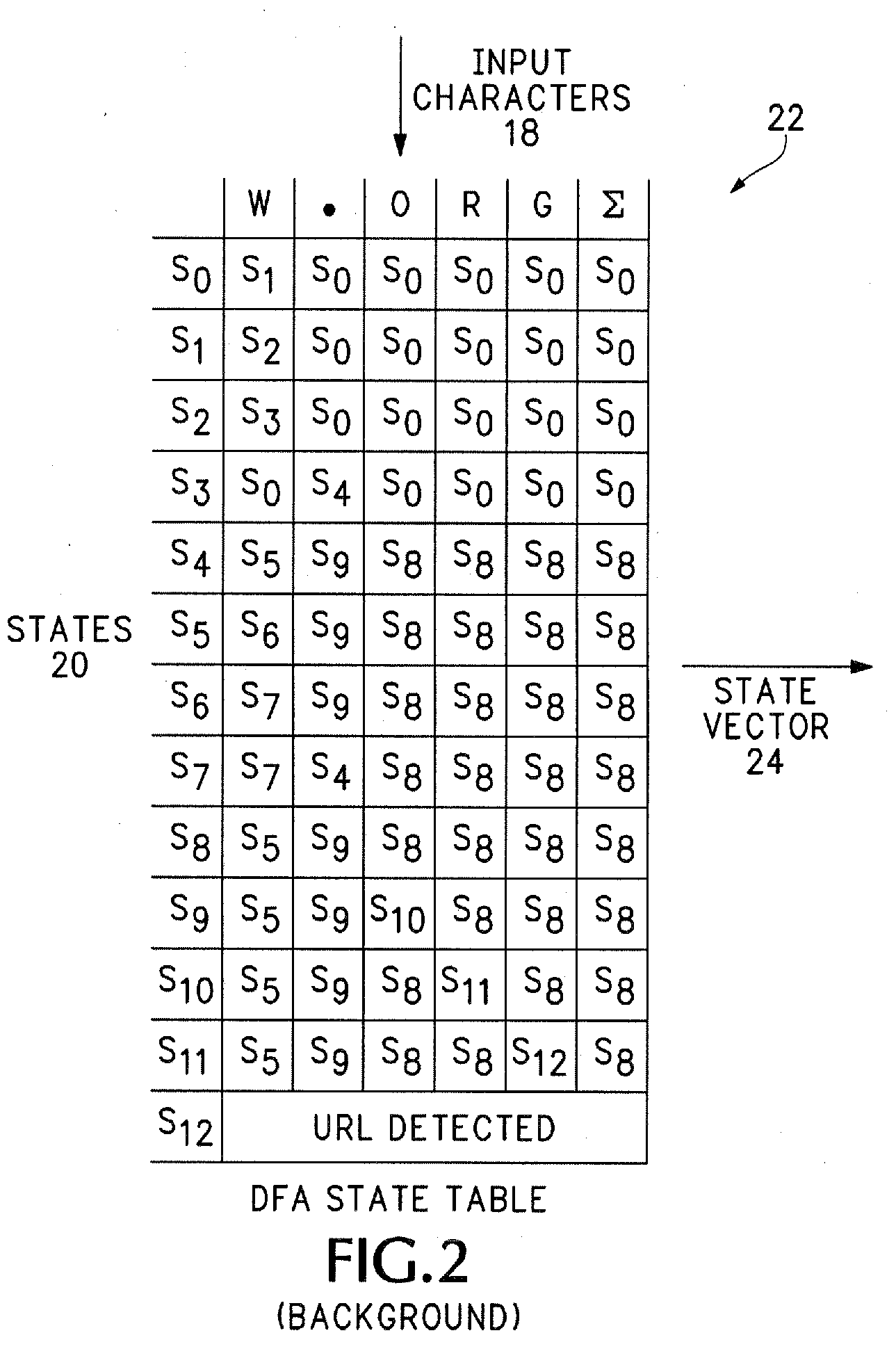Method and apparatus for detecting semantic elements using a push down automaton
a push-down automaton and semantic element technology, applied in the field of push-down automaton detection methods and apparatus, can solve the problems of difficult modification of existing dfa algorithm with new search criteria, complex deterministic finite automata, and limited ability of current computer architectures to execute dfas, so as to achieve a small and more predictable state table
- Summary
- Abstract
- Description
- Claims
- Application Information
AI Technical Summary
Benefits of technology
Problems solved by technology
Method used
Image
Examples
example implementation
[0039]FIGS. 8-12 show in more detail an example PDA context free grammar executed by the PDA engine 40 previously shown in FIG. 4. Referring first to FIG. 8, the same search example is used where the PDA engine 40 searches for the URL string “WWW.XXX.ORG”. Of course this is only one example, and any string or combination of characters can be searched using PDA engine 40.
[0040] It should also be noted that the PDA engine 40 can also be implemented in software so that the semantic table 42, semantic state map 48, and stack 52 are all locations in a memory accessed by a Central Processing Unit (CPU). The general purpose CPU then implements the operations described below. Another implementation uses a Reconfigurable Semantic Processor (RSP) that is described in more detail below in FIG. 5.
[0041] In this example, a Content Addressable Memory (CAM) is used to implement the semantic table 42. Alternative embodiments may use an Static Random Access Memory (SRAM) or Dynamic Random Access M...
PUM
 Login to View More
Login to View More Abstract
Description
Claims
Application Information
 Login to View More
Login to View More - R&D
- Intellectual Property
- Life Sciences
- Materials
- Tech Scout
- Unparalleled Data Quality
- Higher Quality Content
- 60% Fewer Hallucinations
Browse by: Latest US Patents, China's latest patents, Technical Efficacy Thesaurus, Application Domain, Technology Topic, Popular Technical Reports.
© 2025 PatSnap. All rights reserved.Legal|Privacy policy|Modern Slavery Act Transparency Statement|Sitemap|About US| Contact US: help@patsnap.com



